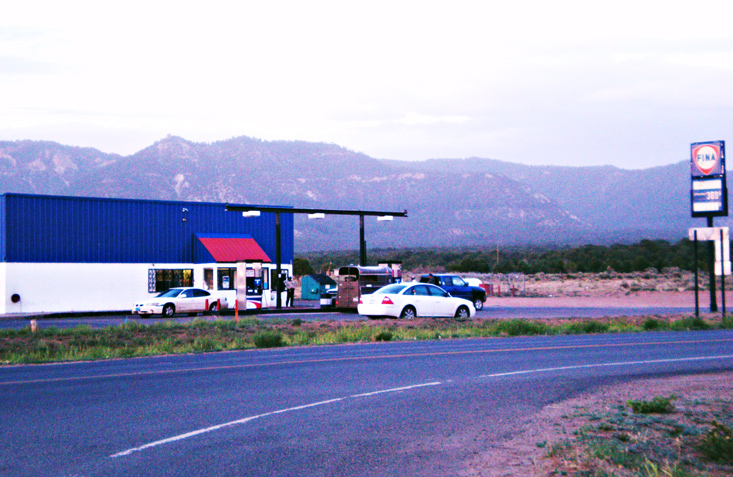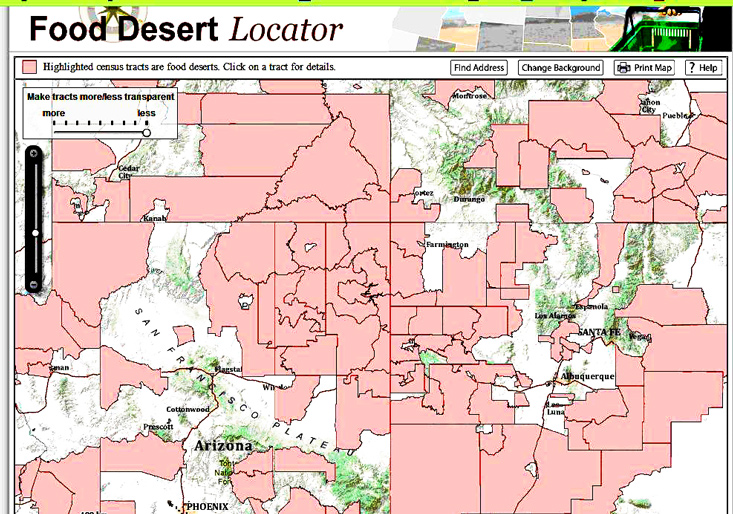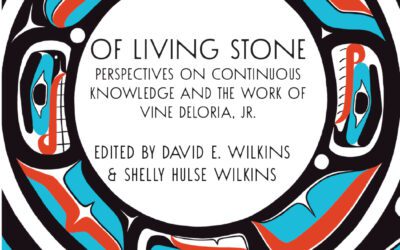This is the second entry from Wynette in a series of blogs from American Indian College Fund scholars sharing their summer internship experiences.

The store in Tsaile, Ariz.
I am in Tsaile, Arizona, where I am living on the Diné College campus. Living on the reservation is drastically different from living in a city like Los Angeles. Normally there are animals wandering around and roaming where they please. This is what I wake up to, and I enjoy it because I definitely don’t get to see a horse cross my path in LA.
I also love living on the reservation because it’s where I grew up and I hope to someday return. However, finding food to eat is a bit of a hassle. For my family, it usually takes about 30 miles to get to a good grocery store that has decent prices. Not to mention that most of the food in every grocery store is genetically modified.

Food desert locator image of the Navajo Nation Store in Tsaile, Ariz. Recently the United States Department of Agriculture released a Food Desert Locator map that maps areas that have low access to healthy food.
Since my internship focuses on the Navajo Nation’s food insecurity, I decided to visually note how much of the reservation is a food desert. Recently the United States Department of Agriculture released a Food Desert Locator map (http://www.ers.usda.gov/data/fooddesert/fooddesert.html) that maps areas that have low access to healthy food. People who live in food deserts have limited or no access to food that is affordable or healthy. The map showed a highlighted pink area that covered the entire reservation.
Before my internship, I knew the area I lived in along with the rest of the reservation was not the best place for nutritious food. Fast food restaurants, gas stations, and grocery stores selling poor quality produce with inflated prices are the only available options. The border towns of Flagstaff, Albuquerque, Gallup, and Farmington are not highlighted on the map and as a result many Navajos drive from their homes to these towns to shop for food.
Household economics and food security influence food access and food choices. A person’s food choices and preferences will be impacted by the cost of food. Ultimately, food deserts are defined by access to foods, types of food offered to the consumer, and the cost and quality of food provided. Ultimately the Navajo reservation does not provide people with meals that are full of nutrients. For example, a gas station in Tsaile, Arizona offers no fresh produce for sale, only white bread, hot dogs, hamburgers, high fructose corn syrup beverages, and canned processed foods. If families in this area do not have a vehicle to travel to Chinle, Arizona (which, according to Google maps, is 26.6 miles from Tsaile), this is their only option. Even if they were to get to Chinle, they would have to pay for poor quality fruits and vegetables at ridiculous prices.
People living in other indigenous communities like the Navajo nation in America also suffer from the same issue. Personally, I think everyone has a right to fresh organic fruits and vegetables and meat from animals that were treated with respect.
All people should understand where their food comes from, how it was made/treated, and be able to look for other options or create them to obtain healthy, affordable food. Here are questions to ask to determine if you are suffering from lack of quality food at a low cost: What types of food are available in your community? Who decides what you eat? Is the food nutritious? Do people in your community pay a reasonable price for healthy foods?
Throughout this internship I will be tackling solutions to provide the Navajo nation to healthy, nutritious food. I am learning about traditional farming methods and the foods that were grown by our ancestors. Indigenous communities provided much of the healthy food that we eat today nationwide without genetic modification. Throughout this internship I will be teaching people to know and understand what they are eating. I hope I got you thinking about something that we have taken for granted in our convenience-oriented society. Remember to eat your vegetables and fruits!






